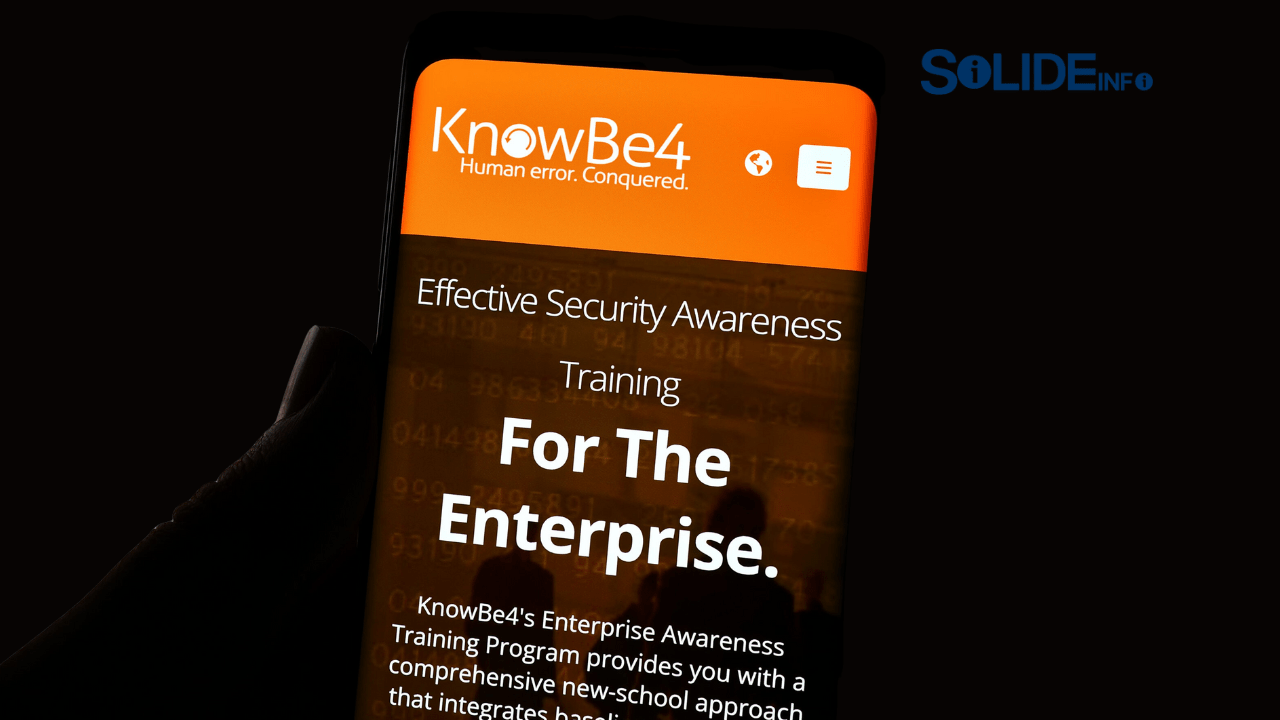Endpoint Security Showdown: CrowdStrike vs Cisco Secure Endpoint

Choosing an endpoint security solution for your business can feel a lot like being a judge at a high-stakes talent show where every contestant is a world-class performer. In one corner, you have the modern, cloud-native disruptor that everyone’s talking about. In the other, the established industry titan with a legacy of power and reliability. Today, our two main contestants are CrowdStrike Antivirus and Cisco Secure Endpoint. Picking the winner isn’t just about handing out a trophy; it’s about entrusting the digital safety of your entire organization to one of them. The stakes are incredibly high, and the marketing jargon can be bewildering. You’re trying to protect your company from digital gremlins, not get a PhD in cybersecurity acronyms. This guide will cut through the noise, acting as your friendly, no-nonsense co-judge. We’ll break down the real differences in their technology, pricing, and overall approach to help you decide which of these endpoint security champions truly deserves a spot protecting your business network.
What Exactly Is an “Endpoint” and Why Is It So Vulnerable?
Before we send our two champions into the ring, it’s crucial to understand what we’re actually protecting. The term “endpoint” can sound a bit sterile and technical, but it represents the most common and vulnerable entry points into your business. Think of your company’s network as a fortress; the endpoints are all the doors, windows, and secret tunnels leading into it.
Beyond Just Your Laptop
In the old days, an endpoint was simply the desktop computer sitting on an employee’s desk, hard-wired to the office network. Today, the definition has exploded. An endpoint is any device that connects to your network: the laptops your remote team uses from their kitchen tables, the servers humming away in your data center (or in the cloud), the smartphones your sales team uses on the road, and even the tablets on your factory floor. With the massive shift to remote and hybrid work, the number of these “doors and windows” has multiplied exponentially, and they are no longer safely within the castle walls. Each one is a potential foothold for an attacker. This decentralized reality is a logistical and security nightmare, making robust endpoint protection not just a good idea, but an absolute necessity for survival in the modern digital landscape. This is a core pillar of any effective cybersecurity posture.
The Evolution from Old-School Antivirus
For years, the solution was simple: install antivirus software. This traditional AV worked like a bouncer with a list of known troublemakers. If a piece of software matched a signature on its list of known viruses, it was blocked. Simple, effective, and woefully inadequate for today’s threats. Modern cyberattacks are far more sophisticated. Attackers use fileless malware that lives only in a computer’s memory, ransomware that encrypts your files and holds them hostage, and polymorphic viruses that change their code to evade signature-based detection. This is why the industry has shifted from basic Antivirus (AV) to Endpoint Protection Platforms (EPP) and Endpoint Detection and Response (EDR). Instead of just checking a list, these modern solutions actively monitor the behavior of everything running on the endpoint. They look for suspicious activities and patterns, allowing them to catch brand-new, never-before-seen threats. This shift from a reactive to a proactive defense is the single most important evolution in the history of endpoint security.
Meet the Heavyweights: CrowdStrike vs. Cisco
Now let’s properly introduce our main contenders. While both aim to solve the same problem, their origins, architecture, and philosophies are fundamentally different, which directly impacts how they operate and who they are best suited for.
CrowdStrike Falcon: The Cloud-Native Disruptor
CrowdStrike Antivirus, more accurately known as the CrowdStrike Falcon platform, burst onto the scene as a cloud-native solution from day one. This means it was built specifically for the modern, interconnected world, not adapted from an older, on-premise model. Its defining feature is a single, incredibly lightweight agent that is installed on each endpoint. This agent uses minimal system resources (we’re talking 1-2% CPU), so your users won’t even know it’s there. All the heavy lifting—the analysis, machine learning, and data correlation—is done in the cloud in what CrowdStrike calls its Threat Graph. This approach provides immense scalability and allows for real-time threat intelligence to be shared across all of its customers instantly. If a new threat is detected on one endpoint anywhere in the world, every other CrowdStrike customer is protected from it moments later. CrowdStrike is often seen as the agile, AI-driven choice for modern businesses that prioritize performance and cutting-edge threat hunting.
Cisco Secure Endpoint: The Enterprise Security Titan
Cisco Secure Endpoint (formerly known as Cisco AMP for Endpoints) comes from a different lineage. Cisco is a giant in the world of networking and enterprise security, and its endpoint solution is built to integrate seamlessly into that vast ecosystem. While it also uses a cloud-managed architecture, its greatest strength lies in its ability to correlate endpoint data with information from its other security products, like firewalls, email security gateways, and web proxies. This gives it unparalleled visibility across the entire network, from the moment a threat enters via an email to the moment it tries to execute on a laptop. This holistic, network-to-endpoint view is a massive advantage for large organizations, especially those already heavily invested in Cisco’s technology. It’s the powerhouse choice for enterprises that need a deeply integrated, all-encompassing security fabric.
The Core Feature Smackdown: Detection, Response, and Beyond
This is where we get into the nitty-gritty. A security platform is only as good as its ability to actually stop bad things from happening. We’ll compare how CrowdStrike Antivirus and Cisco Secure Endpoint stack up in the areas that matter most.
Detection and Prevention Capabilities
Both platforms offer what’s known as Next-Generation Antivirus (NGAV), which goes far beyond simple signature matching. They both use a powerful combination of machine learning, artificial intelligence, behavioral analysis, and exploit mitigation to block threats before they can execute. CrowdStrike’s Threat Graph is its crown jewel, a massive cloud-based brain that analyzes trillions of events per week to identify malicious patterns. Its AI capabilities are industry-leading and allow it to detect and prevent incredibly sophisticated attacks. Cisco Secure Endpoint leans heavily on its world-renowned Talos Threat Intelligence group, one of the largest and most respected commercial threat intelligence teams on the planet. This provides it with an immense, human-curated library of threat data, which it combines with its own advanced behavioral monitoring and sandboxing technologies. While both are incredibly effective, the general consensus is that CrowdStrike often has a slight edge in pure AI-driven detection of fileless and zero-day attacks, whereas Cisco excels in identifying threats based on its deep network intelligence.
Endpoint Detection and Response (EDR): Seeing the Whole Story
Stopping a threat is great, but understanding exactly what happened is crucial. This is the job of EDR. It provides the visibility and tools for security analysts to investigate an alert, see the entire “story” of the attack (how it started, what files it touched, what network connections it made), and remotely respond by isolating the endpoint from the network or killing the malicious process. Both platforms offer robust EDR capabilities. CrowdStrike is famous for its intuitive and powerful threat hunting interface, which allows analysts to easily search for indicators of compromise across the entire organization. I saw a comment on a sysadmin forum that perfectly captured the sentiment: “With CrowdStrike’s EDR, I can trace an attack from start to finish in minutes. It’s like having a DVR for your endpoints.” Cisco Endpoint offers a similar level of visibility with its device trajectory and file trajectory views, which provide a detailed, chronological map of an attack. Its key advantage is the ability to pivot directly from an endpoint event to a network event within the Cisco SecureX platform, offering a more integrated investigation experience for teams using the full Cisco stack.
Architecture and Performance Impact
This is perhaps the most significant point of differentiation for the end-user. CrowdStrike’s single, lightweight agent is legendary for its low performance impact. It doesn’t require signature updates, reboots after installation, or resource-intensive system scans. This means employee productivity is never affected by the security software running in the background. For businesses with thousands of employees, this lack of disruption is a massive selling point. Cisco Secure Endpoint has historically used a more traditional agent that could be heavier on system resources. While Cisco has made significant strides in optimizing its agent in recent years, the perception—and in some cases, the reality—is that it can have a more noticeable impact on device performance compared to CrowdStrike. For organizations where every ounce of CPU and RAM counts, or for those with a large fleet of older devices, CrowdStrike’s architecture is often the more appealing choice.
The “XDR” Factor: Extending Beyond the Endpoint
The latest buzzword in the industry is XDR, which stands for Extended Detection and Response. The idea is to break down security silos by ingesting and correlating data not just from endpoints, but from all your security layers—network, email, cloud workloads, and identity services. This is where Cisco’s ecosystem strategy really shines. Through its SecureX platform, Cisco Secure Endpoint is natively integrated with its entire portfolio, providing a true, single-pane-of-glass XDR experience out of the box. For a Cisco shop, this is an incredibly powerful and compelling proposition. CrowdStrike also offers a robust XDR solution, but it achieves this primarily through tight, API-driven partnerships with other best-in-class security vendors. This offers more flexibility and choice but can require more effort to integrate and manage compared to Cisco’s all-in-one approach. The level of automation possible with a well-integrated XDR platform can drastically reduce response times from hours to minutes.
The Money Talk: CrowdStrike Pricing vs. Cisco’s Cost Structure
Let’s talk about the bottom line. Evaluating the cost of these platforms isn’t as simple as comparing two numbers on a price list, as both vendors use a quote-based model that can be complex.
Deconstructing CrowdStrike Pricing
CrowdStrike pricing is typically structured in tiers, such as Falcon Pro, Falcon Enterprise, and Falcon Elite, with each tier adding more advanced features like EDR, threat hunting, and identity protection. They also offer a-la-carte modules for things like vulnerability management and device control. The price is calculated on a per-endpoint, per-year basis. While not publicly listed, industry reports and user discussions suggest that CrowdStrike antivirus is often positioned as a premium product, and its pricing reflects that. However, many customers argue that the total cost of ownership is lower due to the platform’s simplicity, lack of need for on-premise management servers, and reduced burden on IT and security teams. When considering options, it’s wise to look beyond the initial license and evaluate what other services might be needed, such as reliable business phone systems or secure cloud storage, to build a complete operational picture.
Understanding Cisco’s Licensing
Cisco’s pricing model is often intertwined with its broader Enterprise Agreements (EAs). Many large organizations purchase a suite of Cisco security products as part of a single, comprehensive contract. For these companies, adding Cisco Secure Endpoint to their existing agreement can be very cost-effective. For companies not already in the Cisco ecosystem, the pricing is also on a per-endpoint, per-year basis, with different tiers (Essentials, Advantage, Premier) offering escalating capabilities. Cisco’s bundling strategy can be a huge financial advantage for existing customers, but for new customers, a direct comparison with CrowdStrike is essential. The complexity of enterprise licensing often requires careful financial planning to ensure you’re not overpaying for bundled features you may never use.
What About the Other Players? A Nod to Trellix and Palo Alto
While CrowdStrike and Cisco are titans, they aren’t the only contenders in the ring. The endpoint security market is crowded with excellent solutions, and it’s worth acknowledging a couple of other major players.
The Rise of Trellix Endpoint Security
Trellix Endpoint Security is a relatively new name but is built on a foundation of two industry legends: McAfee Enterprise and FireEye. This combination brings together McAfee’s extensive EPP experience with FireEye’s world-class threat intelligence and incident response capabilities. Trellix offers a comprehensive “living security” platform that aims to be highly adaptive and open. It’s a powerful alternative for organizations that want deep threat intelligence and a robust feature set that competes directly with both CrowdStrike and Cisco. For businesses that have previously used McAfee or FireEye products, migrating to the consolidated Trellix platform can be a logical and powerful next step.
Palo Alto Networks Cortex XDR
Similar to Cisco, Palo Alto Networks is another networking and firewall giant that has developed a formidable endpoint security solution in Cortex XDR. It is widely regarded as a leader in the XDR space, leveraging its deep network visibility to provide rich context for endpoint events. Cortex XDR is known for its powerful analytics and automated root cause analysis, which can dramatically simplify security investigations. For companies already invested in the Palo Alto Networks ecosystem, Cortex XDR offers a similarly compelling, deeply integrated story to Cisco’s, making it a top choice for organizations that want a unified security platform from a single vendor. According to a recent report from Gartner, the ability of XDR platforms to consolidate security functions is a leading driver of adoption, a trend that benefits vendors like Cisco and Palo Alto Networks.
Making the Final Call: Which One is Right for Your Business?
After all the analysis, the decision comes down to your organization’s specific needs, existing infrastructure, and security philosophy. There is no single “best” platform, only the one that is the best fit for you.
The Case for CrowdStrike Antivirus
You should lean towards CrowdStrike Antivirus if your organization is cloud-first and values performance and simplicity. If you have a modern, distributed workforce and need a solution that is easy to deploy and manage without impacting user productivity, CrowdStrike is purpose-built for you. Its best-in-class AI-driven detection and powerful, intuitive EDR capabilities make it a favorite among dedicated security teams and threat hunters who want the sharpest tools available. If you are building a “best-of-breed” security stack and want the flexibility to integrate your endpoint solution with other leading vendors, CrowdStrike’s open platform and extensive API support make it an ideal choice.
The Case for Cisco Secure Endpoint
You should seriously consider Cisco Secure Endpoint if you are a large enterprise, particularly one that is already a significant Cisco customer. The value of its native integration into the broader Cisco security fabric cannot be overstated. If your security strategy is built around deep visibility across your entire network, from the firewall to the endpoint, Cisco offers a unified and powerful solution. The ability to manage and investigate threats across all these vectors from a single platform (SecureX) is a massive operational advantage that can streamline your security operations and reduce complexity. It’s the go-to choice for organizations that prioritize integration and a single-vendor security architecture.
In the end, the showdown between CrowdStrike Antivirus and Cisco Secure Endpoint isn’t about a knockout punch, but a decision on points. CrowdStrike wins on speed, agility, and a modern, cloud-native architecture. Cisco wins on deep integration, network visibility, and the power of its vast enterprise ecosystem. Both offer formidable protection. Your job is to decide which fighting style best matches your organization’s defense strategy. By understanding their core philosophies, you can move beyond the marketing and make an informed choice that will genuinely protect your business from the ever-evolving landscape of digital threats.
What endpoint protection are you using in your organization? Share your experiences and thoughts in the comments below, or check out our other deep dives into the world of enterprise technology!




